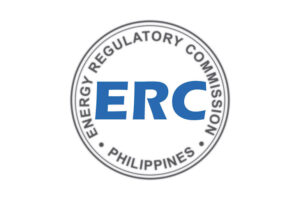The Energy Regulatory Commission (ERC) said it is restarting the rate review process for all private distribution utilities (PDUs), implementing streamlined rules to address the backlog in setting wheeling rates.
The Rationalized Rules for Setting Distribution Wheeling Rates (RRDWR) applies to PDUs operating under the performance-based regulation framework, the ERC said in a statement.
“The ERC’s approval of the RRDWR also marks a departure from the previous regulatory periods established for the PDUs, which were not adhered to due to the suspension or delays in the rate reset process,” the regulator said.
The RRDWR sets the maximum allowable distribution, supply, and metering rates for PDUs, which incorporates “internationally recognized practices to balance consumer protection with fair returns for utilities.”
“The RRDWR defines the procedures for determining revenue requirements, capital and operating expenditures, performance incentive mechanisms, and annual rate adjustments — all within a streamlined and time-bound regulatory reset process,” the ERC said.
Under the new rules, the ERC will use a pricing scheme that sets a maximum allowable rate based on efficient costs, service quality targets, and measurable performance indicators.
“This approach encourages distribution utilities to improve efficiency and reliability while maintaining affordability for consumers,” the ERC said.
The new rules will govern the regulatory reset of the first entry group, which includes Manila Electric Co., Dagupan Electric Corp., Cagayan Electric Power and Light Co, and Cotabato Light and Power Co.
This set covers the period from July 1, 2026 to June 30, 2030.
The Electric Power Industry Reform Act tasks the ERC with establishing a method for setting transmission and distribution wheeling rates. The rates must be set in a way that allows the recovery of “just and reasonable costs and a reasonable return on rate base” to enable the entity to operate viably.
The rate reset process is usually a forward-looking exercise that requires the regulated entity to submit forecast expenditures and proposed projects.
“By taking this decisive step, the ERC demonstrates its resolve to fulfill its legal mandate as the rate regulator for the power industry,” the regulator said. “It also underscores its commitment to a fair, transparent, and accountable regulatory process that ensures reasonable electricity rates, promotes operational efficiency, and supports the ongoing modernization of the country’s power distribution sector.” — Sheldeen Joy Talavera
